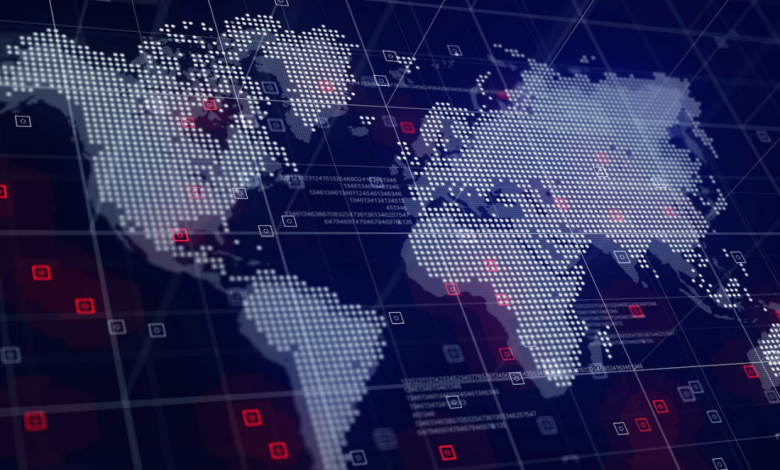Cyberspace : A Different World

The term “cyberspace” appears to have originated in a science fiction film. Technology, on the other hand, has become an indispensable part of our everyday lives in the twenty-first century. In this introduction to Cyberspace, we will look at what Cyberspace is and why rules are crucial in defining Cybersecurity. ‘Cyberspace’ is a metaphorical concept that is intended to represent the space where your awareness is located when you use computer technology, such as the Internet, and I’m not exactly sure it’s such a helpful phrase, but I believe that’s what most people mean by it.
What is Cyberspace: Definition
We’ve all seen how technology can assist in levelling the playing field. It used technology to build machine-clones — computers with high-speed data processing devices which are very useful in modern life.
By manipulating electrical, magnetic, as well as optical signals, they can also perform complex arithmetic, memory, and logical processes. A network-of-networks, sometimes known as the internet, pools the computing capacity of all connected computers. Users in cyberspace share information, communicate with one another, participate in discussions or social media platforms, and engage in a range of other activities.
Cyberspace is the dynamic and virtual domain formed by such networks of machine-clones. To put it another way, cyberspace refers to the worldwide network of consumer electronics, computers, and communication networks. Cyberspace is similar to a computer. It is a virtual network and an electronic medium designed to make online communication easier. This enables global communication to be simple and accessible. Cyberspace is made up of large computer networks with various sub-networks. It uses the TCP or IP protocol.
What are the main distinctions between cyberspace and the real world?
The real world is characterized by fixed contours and is static, well-defined, and gradual. Cyberspace, on the other hand, is dynamic, indeterminate, and exponential. It is also as vast as the human imagination and lacks a defined shape. Cyberspace is a digital medium rather than a real area. It is an interactive universe, not a replica of the real world.
Cyber Laws
Cyberlaw, according to the definition of Cyberspace, is a comprehensive term that incorporates all regulatory and legal elements of the internet. Cyber laws pertain to any citizen’s acts that are related to or related to the legal elements of Cyberspace.
All legal issues concerning the communicative, distributive, and transactional characteristics of network-related information devices and technologies. They are all protected by cyber laws. It is distinct from any other piece of legislation, including the Property Law. However, it is not as dissimilar to property law. It is also larger since it contains a wide range of laws and regulations. As a result, it covers all important legislative, legal, and constitutional legislation pertaining to computers and the internet. Cybercrime is punishable by law for both individuals and organisations. Play an important part in ensuring that people have access to the Internet. Creates software and/or hardware to enable users to get access to Cyberspace, and then utilizes their computer system to do so.
Cyber Laws and Cyber Security
Cyber laws exist to keep individuals from exploiting cyber technology. Nonetheless, its overarching purpose is to prohibit anybody from infringing on the rights of others in cyberspace. Any violation of a person’s online rights is referred to as a cyberspace infraction, which is punished under cyber laws.
Because cyberspace is not a physical location, physical laws do not apply to cybercrime. To safeguard Cyber users, the government enacted a special set of Cyber laws.
Only a few examples include hacking, theft, money laundering, terrorism, piracy, and other common cybercrime activities. Hackers can obtain access to anyone’s computer system by using the Domain Name Server (DNS), phishing, IP addresses, and other means to steal data or introduce computer flaws that render the system inoperable.
About Drive It
Drive IT Technologies was started in 2013 in Hyderabad. It is one of the few cyber security enterprises in India that offers end-to-end customised cyber security solutions and services to businesses worldwide. Rather than merely selling solutions, Drive IT works hard to make cyber security a reality for its clients, which greatly benefits them.
The gathering of intelligence utilizing open source intelligence (OSINT), social media intelligence (SOCMINT), human intelligence (HUMINT), technical intelligence, or intelligence from the deep and dark web is the foundation of Cyber Threat Intelligence as a Service. Drive IT offers CTI to clients on a proactive basis in order to prevent cyber dangers before they occur.
Drive IT prioritizes our clients’ cyber security needs and applies the finest security policies available. “As a Cyber Security Enabler, our mission is to provide high-quality IT Infrastructure Optimization, Security Assessment, and Professional Learning Services in the IT Networking but Also IT Security Arena,” says Dwarka Nath Sundar, Founder & CEO of Drive IT Technologies. Drive IT Technologies is confident in its capacity to increase client trust and visibility.
For More Updates – Click Here




